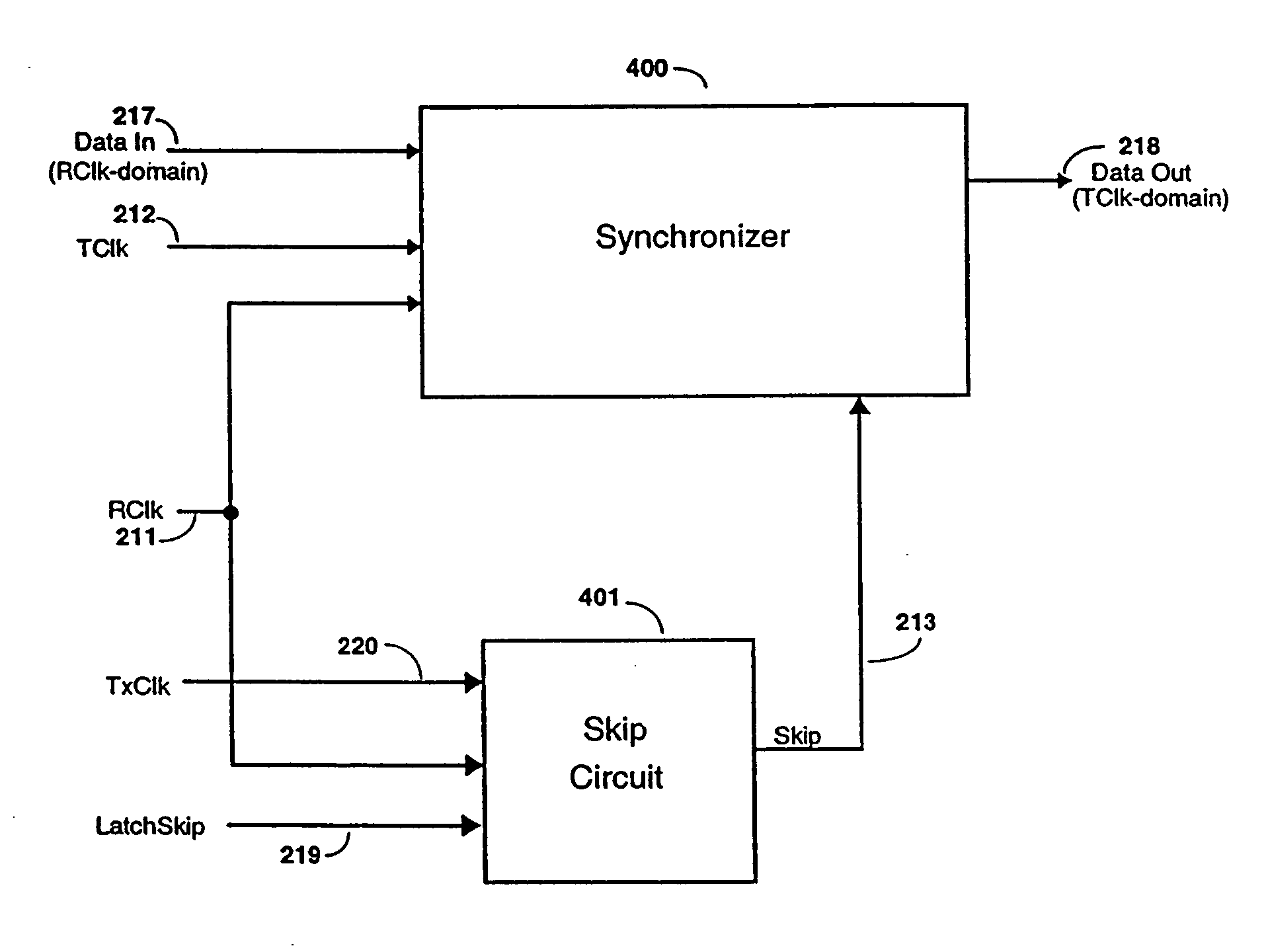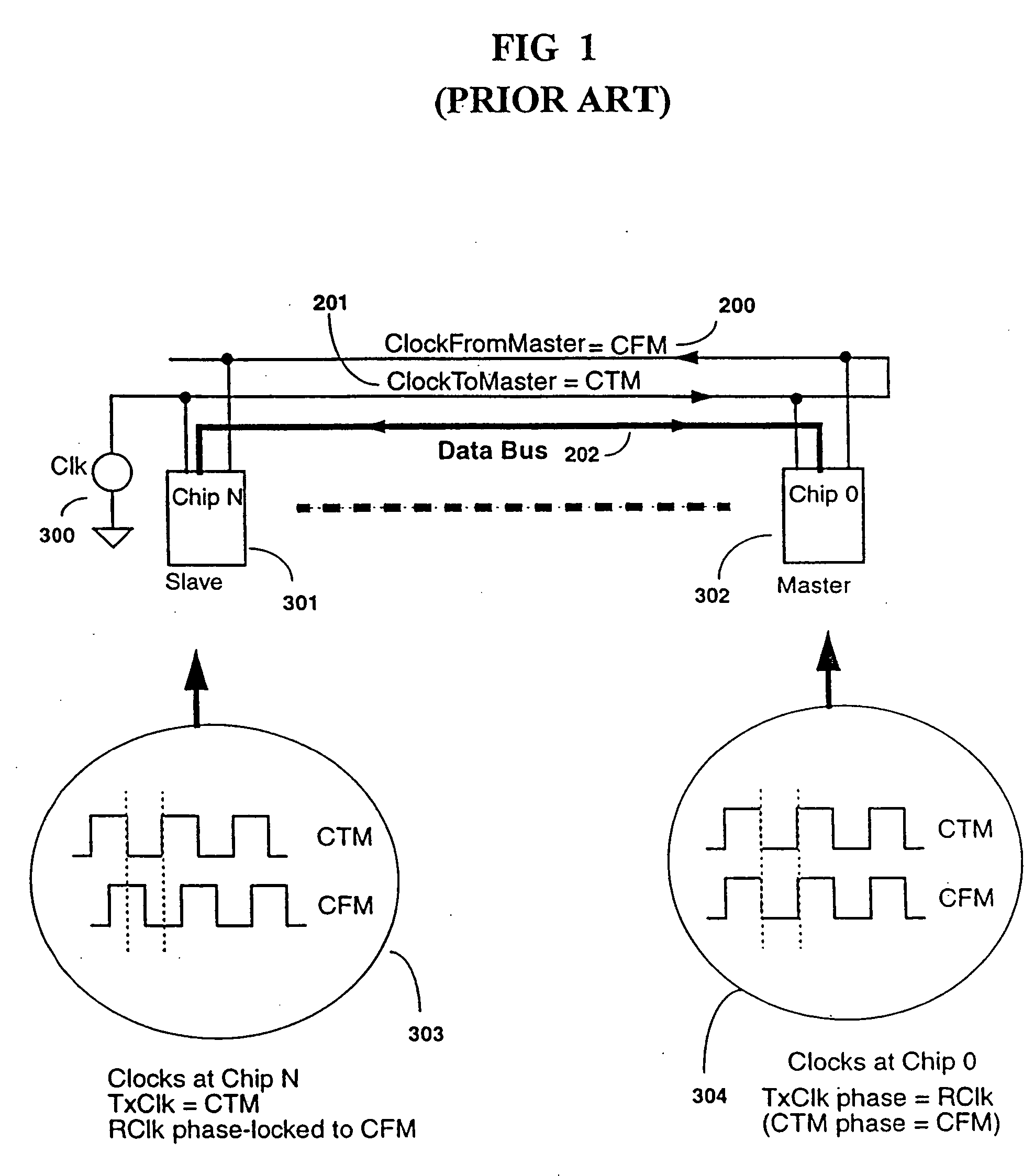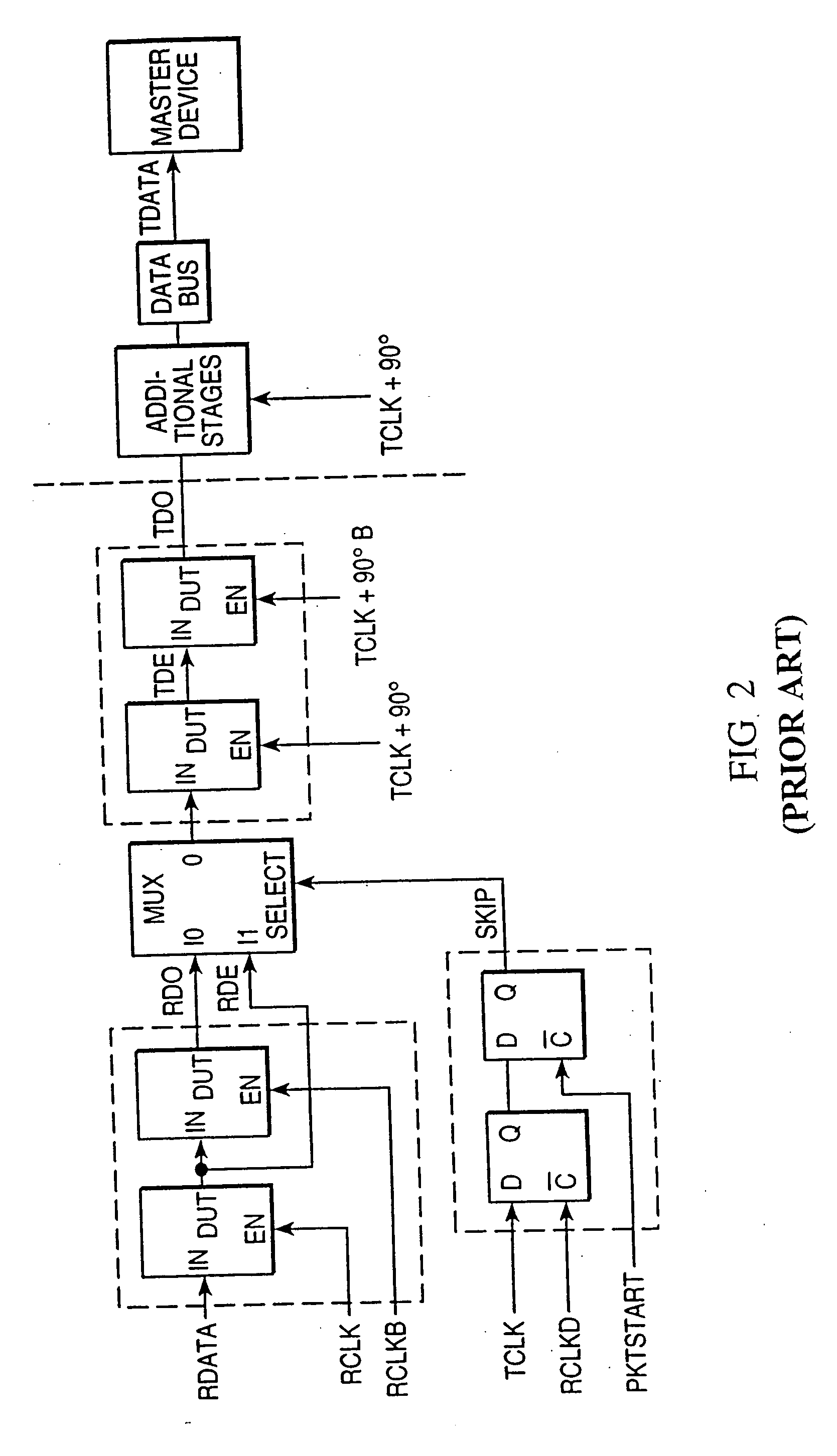Method and apparatus for fail-safe resynchronization with minimum latency
a synchronization and minimum latency technology, applied in the direction of synchronization signal speed/phase control, instruments, generating/distributing signals, etc., can solve the problems of freezing the latency period of circuit operation, freezing the clock selection, etc., and achieve the effect of stable operating configuration
- Summary
- Abstract
- Description
- Claims
- Application Information
AI Technical Summary
Benefits of technology
Problems solved by technology
Method used
Image
Examples
Embodiment Construction
Overview of Invention
[0041] This invention makes it possible to take input data of arbitrary phase and re-time it into a second mesochronous clock domain with minimal latency. A block diagram of the preferred embodiment is shown in FIG. 6. It achieves this re-timing via the Synchronizer 400 and the Skip Circuit 401. Each of these distinct circuits and their functions will be described separately, with their operation together described last.
Definitions
[0042] There are several terms which aid in the following discussion of the invention.
[0043] Rclk: Clock phase-locked to Bus-receive clock (204 in FIG. 5). Duty-cycle corrected.
[0044] TxClk: Transmit clock as seen on Bus. TxClk lags TClk by 90° (203 in FIG. 5). Not duty-cycle corrected.
[0045] Tclk: Clock signal in quadrature with TxClk to facilitate centering of output data around transmit clock. Duty-cycle corrected.
[0046] tTR: Time delay from TxClk to RClk divided by the clock cycle-time. This number can also be expressed as a...
PUM
 Login to View More
Login to View More Abstract
Description
Claims
Application Information
 Login to View More
Login to View More - R&D
- Intellectual Property
- Life Sciences
- Materials
- Tech Scout
- Unparalleled Data Quality
- Higher Quality Content
- 60% Fewer Hallucinations
Browse by: Latest US Patents, China's latest patents, Technical Efficacy Thesaurus, Application Domain, Technology Topic, Popular Technical Reports.
© 2025 PatSnap. All rights reserved.Legal|Privacy policy|Modern Slavery Act Transparency Statement|Sitemap|About US| Contact US: help@patsnap.com



